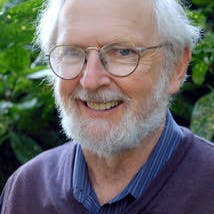Enthralled by the Beauty of God
Why Jonathan Edwards Still Preaches

What about the theological insights of Jonathan Edwards (1703–1758) makes them so exhilarating for many who discover them today?
As a Reformed Christian who has long benefited from Edwards’s insights, I have been fascinated by that question. Sixty years ago, when I was a student, Edwards was respected in Reformed circles, but not often celebrated. Within thirty years, however, he had been rediscovered and had become widely revered as the one American theologian who might be mentioned in the same breath with Augustine and Calvin. So, in my studies of Edwards, I have kept asking which of his insights are most valuable for shaping Christian sensibilities today.
How does Edwards speak to us now in the twenty-first century?
Two Worlds Collide
As a historian of American religion and culture, I have been especially interested in how Edwards’s own cultural context helps us understand his continuing relevance. Especially important for that understanding is that Edwards lived at a dramatic turning point in Western culture.
As a precocious teenager, Jonathan struggled passionately with how to reconcile two very attractive worlds. The son of a strict and impressive New England Reformed pastor, he was heir to what had become one of the most formidable intellectual-spiritual traditions of the time. Yet he also was fascinated by the exciting new outlooks arising from the scientific revolution shaped by Isaac Newton, the philosophical insights of John Locke, and what we know as the Enlightenment. We might think of his close New England contemporary Benjamin Franklin, who also was confronted with these two worlds and embraced the Enlightenment.
Edwards recounted that, as a teenager wrestling with these two outlooks, he was full of objections to the “sovereignty of God,” which he thought was a “horrible” doctrine. But then, in a way he could not quite explain, he came to embrace that teaching as “a delightful conviction.” He then goes on to speak of his experiences of an “inward, sweet delight in God and divine things” (Works of Jonathan Edwards, 16:792).
In brief, I think the best explanation for this paradigm shift is that Edwards’s early view of God’s sovereignty was too small. He came to see that if God’s sovereignty is understood properly, it extends to the very essence of all reality. And not only that, but it means that the universe is essentially personal. God’s sovereignty, in biblical terms, is an expression of the language of God. “The heavens declare the glory of God” (Psalm 19:1).
God’s language is not identical with God, but it is nonetheless an intimately personal expression. And that language is the language of love. God created the universe and sustains it every microsecond ultimately in order to communicate love to creatures capable of love. And the supreme expression of that love is the sacrificial love of Christ for the undeserving.
Our Impersonal Age
Edwards’s view of the universe as essentially personal offers a view of reality opposite from the direction his enlightened contemporaries — and eventually the whole modern world — were moving.
For Isaac Newton, the physical universe could be understood as interacting impersonal mechanisms. One could add the God of Christianity to this outlook (as Newton himself did), or a vague Providence (as Franklin did), but practically speaking, most things could be understood as the operations of impersonal forces.
During the next generations, the enlightened Deists distanced God further from everyday life. Deists still thought it necessary to posit a Creator of the marvelous mechanisms, but for them, God, like a master watchmaker, had essentially retired, allowing the wonderful machinery to operate on its own.
By the later nineteenth century, with the advent of Darwinism, it became plausible for progressive thinkers to remove God altogether and to view all reality as the product of mindless, chance forces out of which intelligent beings happened to appear.
Today, all of us, even though we might reject a chance universe, are shaped in part by the assumptions on which our civilization has been built: that the universe is most essentially impersonal, run by laws best known by natural science and controlled by instrumental reason. Technology vastly increases the domain of that impersonal universe as its influence shapes our lives, determining how we earn livings, how we organize our everyday lives, how we spend money, how we communicate, how we form our beliefs, how we are entertained, and often how we worship. God is almost inevitably distanced from that impersonal world run by its self-contained sets of laws.
Religious believers typically supplement that world with beliefs in a higher spiritual reality and with some moral principles that may somewhat modify the way they relate to the technological society and the natural world. They typically believe God created the world sometime in the past and may still intervene at any time, particularly with respect to occasional spiritual experiences or regarding personal concerns, especially matters of health. The outlook of religious believers is thus often dualistic. We tend to move back and forth between two types of realities — the “real world,” as we might say in an unguarded moment, and the higher spiritual dimension. These two are seldom well integrated with each other.
God’s Language of Love
Edwards’s starting point in the triune God’s ongoing creative love provides a wonderful basis for cultivating some alternative sensibilities. For Edwards, the most essential dimension of reality is the spiritual and personal that pervades everything. This outlook is not just added on to what we believe about the material world. Rather, it is a reorienting recognition of underlying dimensions of reality that define everything that is.
All creation is part of a language that has its highest expression in the redemptive love of God in Christ. Edwards often speaks of that love as the highest beauty. We all can get glimpses of the wonderful beauty of the natural world around us, as in a sunset or in the flowering trees of springtime. These point to the higher beauties in personal relationships. The highest beauty, after all, is the beauty of true love. And again, the highest love is Christ’s love for us as undeserving sinners.
Edwards accordingly cultivated sensibilities toward what we regard as “the natural world” to see it as a personal expression of a loving God whose love to us should shape our affections. Edwards saw created reality typologically as “Images of Divine Things.” He kept an extensive notebook with that title where he recorded reflections on how the beauties of Christ’s love are revealed in everything around us. Since nature has been corrupted by sin, its revelations are also of Christ’s redemptive love. The beauties of the universe are the harmonies of right relationships that we sometimes get intimations of in the beauty of trees and flowers.
In Edwards’s greatest sermon, “A Divine and Supernatural Light,” he depicts the beauty of the redemptive love of Christ as a light flowing from the center of reality. Since that light reveals the beauty of a loving person, it can be truly known only affectively. Someone might have just a rational knowledge about that love but not truly sense it. Edwards uses the analogy of our human loves. “There is a difference between believing that a person is beautiful, and having a sense of his beauty. The former may be obtained by hearsay, but the latter only by seeing the countenance” (Works, 17:414).
So, if we are given eyes to see the overwhelming beauty of that love, we will freely and enthusiastically embrace it. And if we do truly encounter the love of Christ, it will bring a joy and delight; that is, a new sensibility will begin to reshape our lives and loves.
Transformed by Beauty
Edwards, then, points us toward an overwhelming, wonderful, and life-changing personal beauty. That encounter with the beauty of God’s love at the center of reality offers something much deeper than simply adding new religious convictions and practices to our other activities and loves shaped by the devices and desires of our technological civilization.
Rather, our joy and delight in experiencing Christ’s love will give us new sensibilities about everything around us. It will also reorder our loves. In his great treatise on Religious Affections, Edwards offers us a guide as to what these life-changing loves look like, culminating in Christlike characters and practices of love to neighbors.
None of us may fully live up to these ideals, but in Edwards we find a guide who offers wonderful alternatives to the soul-deadening outlooks of our contemporary world.




